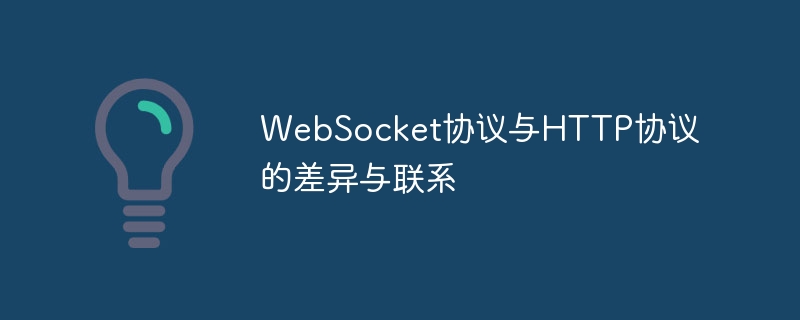

Differences and connections between WebSocket protocol and HTTP protocol
Introduction:
With the popularity of the Internet, the demand for Web applications continues to increase. In order to achieve real-time interaction and Push function, new communication protocol WebSocket emerged at the historic moment. The traditional HTTP protocol is gradually replaced by WebSocket in this process. This article will focus on the differences and connections between the WebSocket protocol and the HTTP protocol, and give specific code examples.
1. Characteristics of HTTP protocol:
HTTP protocol is an application layer protocol, based on the request-response model. HTTP requests are stateless, that is, each request is independent and the server does not retain the client's state information. The client obtains data or completes an interaction by sending an HTTP request to the server. After the server receives the request, it returns the data by sending an HTTP response to the client. This mode is suitable for traditional web browsing, but it is inexperienced for real-time interaction and push functions.
2. Characteristics of the WebSocket protocol:
3. The difference between WebSocket and HTTP:
4. The connection between WebSocket and HTTP:
Code example:
The following is a simple code example that uses the WebSocket protocol to implement the real-time chat function.
// 服务端代码
const WebSocket = require('ws');
const wss = new WebSocket.Server({ port: 8080 });
wss.on('connection', function connection(ws) {
ws.on('message', function incoming(message) {
console.log('received: %s', message);
// 对收到的消息进行处理
ws.send('Hello, ' + message);
});
ws.send('连接成功!');
});
// 客户端代码
const socket = new WebSocket('ws://localhost:8080');
socket.onopen = function() {
console.log('WebSocket连接成功!');
};
socket.onmessage = function(event) {
console.log('消息:' + event.data);
};
socket.send('Hello Server!');This example uses the ws library of Node.js to implement a simple WebSocket server and client. When the client sends a message to the server, the server processes the message and sends a response to the client. The client prints out the response from the server when it receives it. Through the WebSocket protocol, two-way communication and real-time push functions are realized.
Conclusion:
The WebSocket protocol and the HTTP protocol are very different in realizing real-time interaction and push functions. The WebSocket protocol has the characteristics of real-time, low latency and reliability, and is suitable for application scenarios with real-time interaction and push functions. The HTTP protocol is suitable for one-time request-response mode. But WebSocket is an extension based on the HTTP protocol, and the two are connected and complementary to each other.
References:
The above is the detailed content of Differences and connections between WebSocket protocol and HTTP protocol. For more information, please follow other related articles on the PHP Chinese website!




